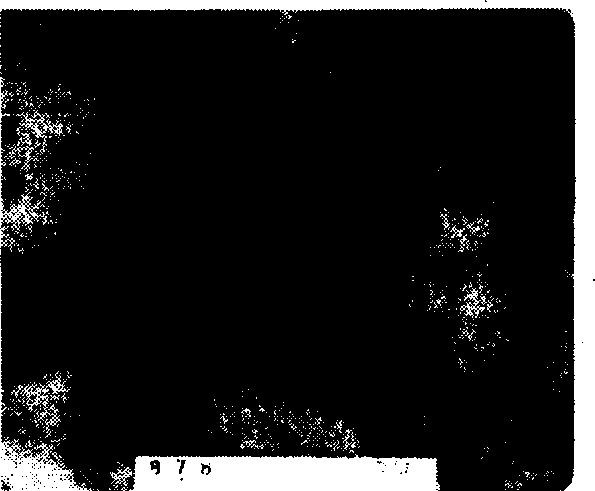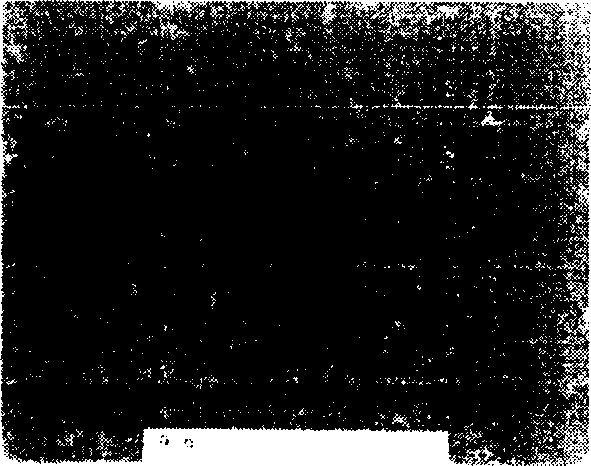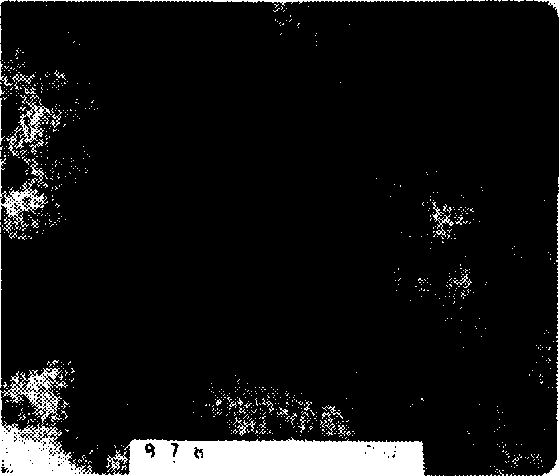Method for superfine particle surface modification
A technology of ultra-fine particles and surface modification, which is applied in the treatment of dyed polymer organic compounds, etc., and can solve problems such as complex processes, harsh reaction conditions, and numerous steps
- Summary
- Abstract
- Description
- Claims
- Application Information
AI Technical Summary
Problems solved by technology
Method used
Image
Examples
Embodiment 1
[0019] AB 2 (A: ester group, B: hydroxyl) monomer: the synthesis of N, N-dihydroxyethyl-3-propionic acid methyl ester monomer:
[0020] Weigh diethanolamine and methyl acrylate at a molar ratio of 1:1, use methanol as solvent, and place in a four-neck flask under N 2 Protected, 40°C, constant temperature under magnetic stirring for 4h, the solvent methanol was distilled off under reduced pressure to obtain a light yellow transparent liquid, which was N,N-dihydroxyethyl-3-propionic acid methyl ester monomer.
[0021] nano-SiO 2 Modification reaction of grafted hyperbranched poly(amine-ester) (AB 2 monomer, melt polymerization):
[0022] Weigh 1g nano-SiO 2 , 0.023~0.0702molN, N-dihydroxyethyl-3-propionic acid methyl ester monomer and 0.03~0.07g p-toluenesulfonic acid were placed in a four-necked bottle, and vigorously stirred at 120°C for 10h under nitrogen protection. A light yellow viscous substance was obtained, which was washed with ethanol and centrifuged to precipita...
Embodiment 2
[0032] A 2 Synthesis of B monomer (A: ester group, B: hydroxyl group): N-hydroxyethyl-3-amino-N, N-methyl dipropionate):
[0033] Weigh ethanolamine and methyl acrylate at a molar ratio of 1:2, use methanol as solvent, and place in a four-neck flask under N 2 Protected, 40 ℃, constant temperature under magnetic stirring for 4h, solvent methanol was distilled off under reduced pressure to obtain a colorless and transparent liquid, namely N-hydroxyethyl-3-amino-N,N-methyl dipropionate) .
[0034] nano-SiO 2 Modification reaction of grafted hyperbranched poly(amine-ester) (A 2 B, solution polymerization):
[0035] Weigh 1g nano-SiO 2 , 0.01~0.0468mol 2-hydroxyethyl-N, N-di(methyl propionate) monomer and 0.01~0.04g p-toluenesulfonic acid and 15ml decahydronaphthalene in a four-necked bottle, under nitrogen protection at 140 ℃, vigorously stirred for 12h. A yellow sticky substance was obtained, which was washed with chloroform and centrifuged to precipitate (1.5×10 4 rpm), th...
Embodiment 3
[0045] Modification reaction of nano carbon black surface grafted hyperbranched poly(amine-ester)(AB 2 monomer, melt polymerization):
[0046] Weigh 1g of nano-carbon black, 14g of N,N-dihydroxyethyl-3-propionic acid methyl ester monomer and 0.07g of p-toluenesulfonic acid into a four-necked bottle, and vigorously stir at 130°C for 10h under nitrogen protection. A black sticky substance was obtained, which was washed with ethanol and centrifuged to precipitate (1.5×10 4 rpm), the precipitate was washed with ethanol and centrifuged again, and the above steps were repeated until no unreacted substance was detected in the washing solution. The precipitate was vacuum-dried at 30° C. for 6 hours to obtain hydroxyl-terminated hyperbranched poly(amine-ester) graft-modified nano-carbon black.
[0047] Compared with ungrafted nano-carbon black, 1700cm on the FT-IR spectrogram of the product after reaction -1 The characteristic absorption peak of C=O carbonyl group is obviously stren...
PUM
 Login to View More
Login to View More Abstract
Description
Claims
Application Information
 Login to View More
Login to View More - R&D
- Intellectual Property
- Life Sciences
- Materials
- Tech Scout
- Unparalleled Data Quality
- Higher Quality Content
- 60% Fewer Hallucinations
Browse by: Latest US Patents, China's latest patents, Technical Efficacy Thesaurus, Application Domain, Technology Topic, Popular Technical Reports.
© 2025 PatSnap. All rights reserved.Legal|Privacy policy|Modern Slavery Act Transparency Statement|Sitemap|About US| Contact US: help@patsnap.com



